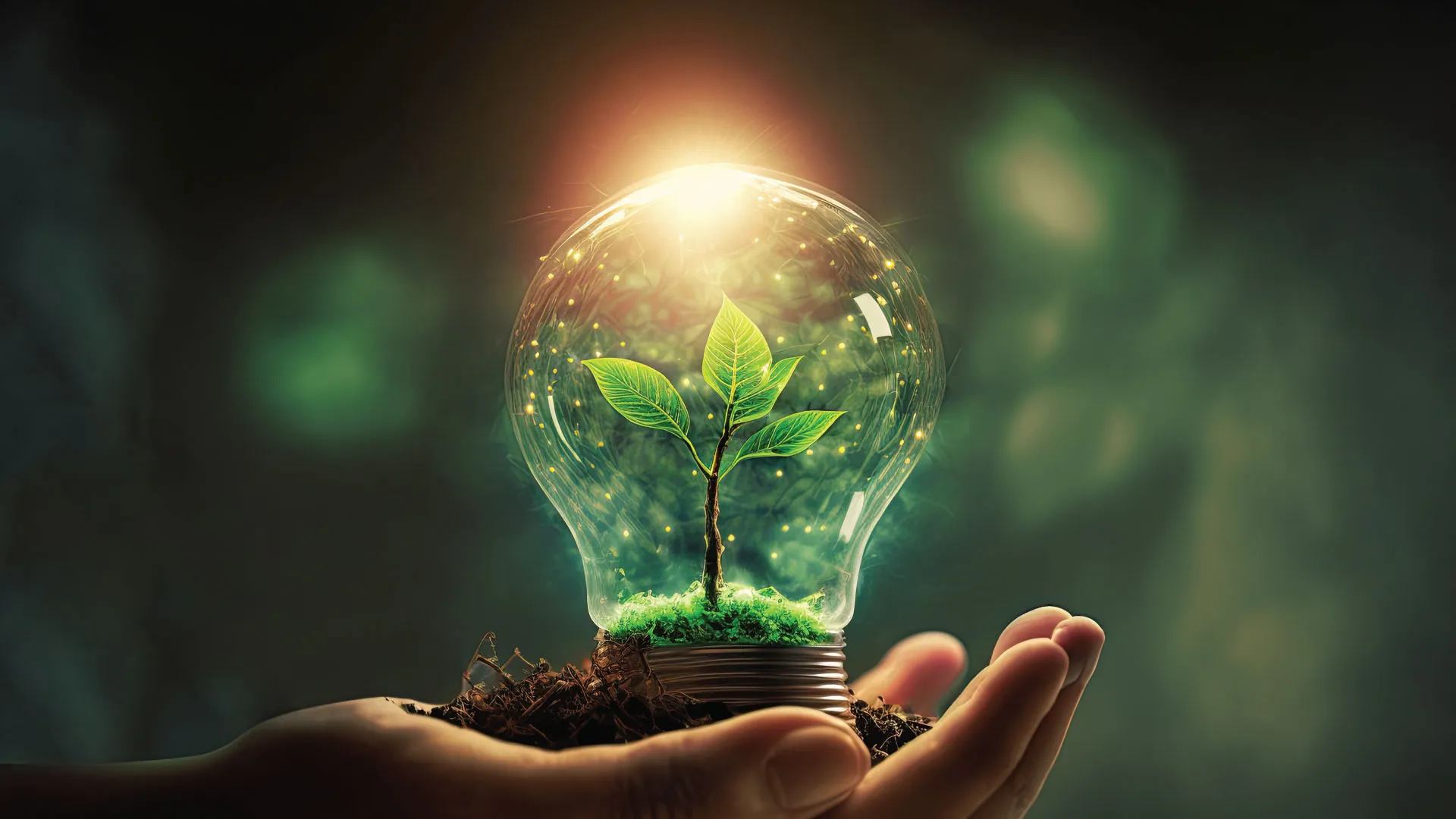Chapter 4: Harnessing the Heat of the Earth
A constant, weather-proof source of dependable clean power—geothermal can strengthen Canada’s grid and economy, and fuel a brighter, greener future.
On March 11, 2011, Japan was struck by the strongest earthquake in its recorded history. The 9.0 magnitude undersea “double quake” hit 130 kilometers off the East coast of Sendai in the North Pacific, lasting three minutes. The earthquake triggered a powerful tsunami, with waves as high as 40 meters (132 feet), devastating Japan’s infrastructure. In the city of Okuma, Fukushima, the tsunami caused three nuclear reactors to melt down. A 15-meter wave flooded the plant, destroying 12 of the 13 backup generators and leaving the entire facility powerless.
Without the backup generators, the plant couldn’t vent heat, leading to a dangerous buildup of steam. A chemical reaction began producing hydrogen, which eventually mixed with air and caused a massive explosion, blowing off the roof and upper section of the building. It took two weeks to fully contain the meltdown. Despite the explosion, there were no reported deaths directly linked to the reactor failure. In contrast, the tsunami claimed nearly 20,000 lives, displaced half a million people, and caused nearly $325 billion USD in damages, making it the costliest natural disaster in history.
The Fukushima Daiichi disaster—ranked as the second-worst nuclear accident in history—became a symbol of the risks associated with nuclear energy, reigniting fears that had been dormant since Chernobyl. Its impact rippled far beyond Japan, forcing countries around the globe to confront a difficult question: could they still trust nuclear power?
Japan’s decision was swift and definitive. Within a year, it shut down all 48 of its remaining reactors.
The shutdown of the Fukushima reactors and the subsequent closures of all other nuclear reactors across the country meant that the supply of electricity from nuclear power in Japan dropped from 31.2% in February 2011 to zero in May 2012.
- The Fukushima nuclear accident and its effect on global energy security, Energy Policy (2013)
The disaster sent shockwaves far beyond Japan. Germany, deeply influenced by public fears and political pressure, took similar steps, voting to decommission eight nuclear power plants and committing to phase out the remaining nine by 2022. By April 2023, the country shut down its last three nuclear reactors.
Germany aimed to replace its lost nuclear capacity with renewables, setting ambitious targets to generate 80 percent of its electricity from wind, solar, and hydropower by 2030. But by 2022, renewables accounted for less than 40 percent of installed capacity. The rushed decision to abandon nuclear power had unintended consequences, forcing Germany to reactivate coal-fired power plants and increase its reliance on fossil fuels.
By 2022, coal powered a third of Germany’s electricity, an 8 percent increase from the previous year, while nuclear power generation dropped by 50 percent. Already one of the world’s largest importers of fossil fuels, Germany deepened its reliance on Russian natural gas—55 percent of its supply—leaving it vulnerable when Russia invaded Ukraine in 2022.
The subsequent energy crisis shattered German living standards and exposed the risks of an energy transition that prioritizes shutting down nuclear before viable alternatives are in place.
The energy crisis triggered by Russia’s invasion of Ukraine has led to the sharpest decline in German living standards since World War II, with economic losses rivaling those of the 2008 financial crisis.
- The Economics of the Energy Shock in Germany, Forum New Economy Working Papers (2024)
Germany’s nuclear exit reflects a broader global trend. Italy and Lithuania have also phased out nuclear energy entirely, while Belgium and Spain plan to follow by 2035. Switzerland overturned its earlier ban on new nuclear plants, recognizing the mounting pressures of energy security and climate goals. Despite these shifts, nuclear energy remains at the center of fierce debates, as countries weigh its risks against its potential.
For decades, images of Chernobyl’s radioactive ruins and Fukushima’s flooded reactors have dominated the public imagination, casting long shadows over nuclear power’s promise. These disasters became cautionary tales—hard to forget and harder still to move past.
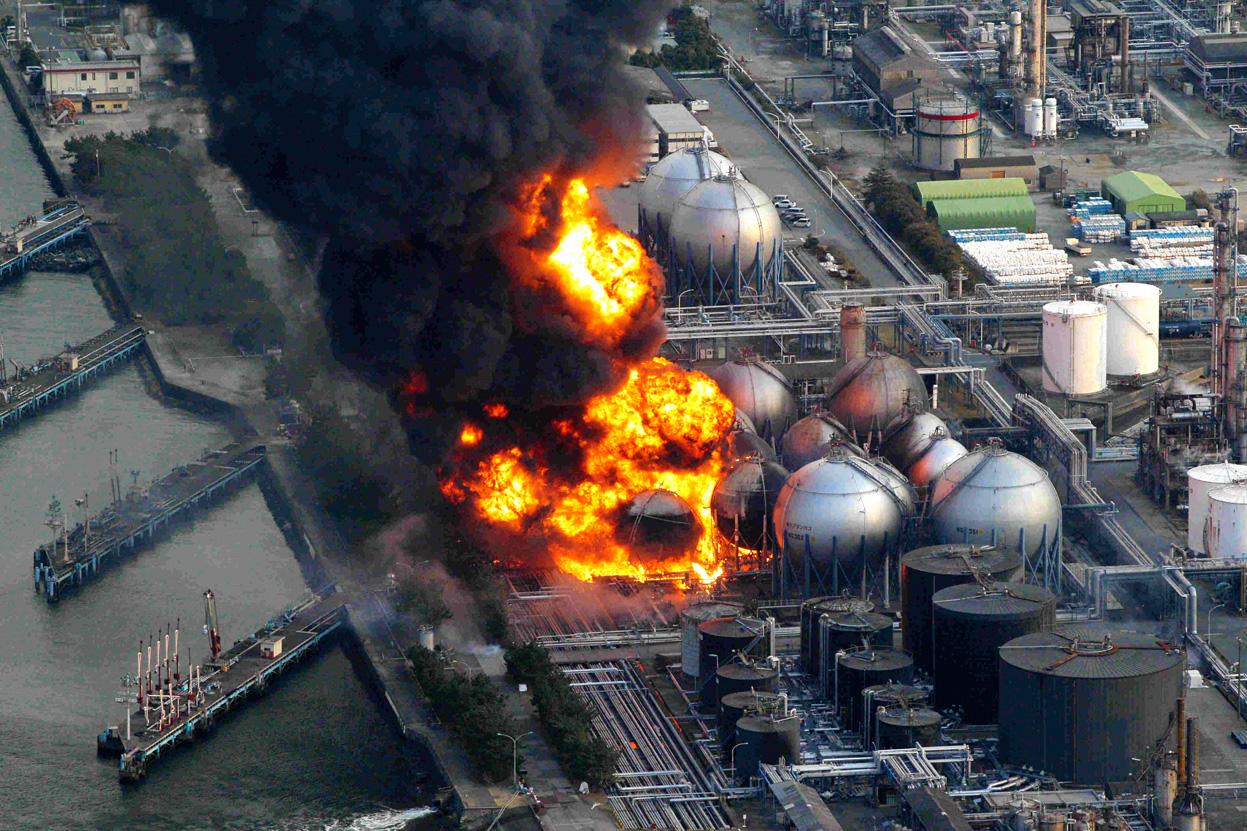
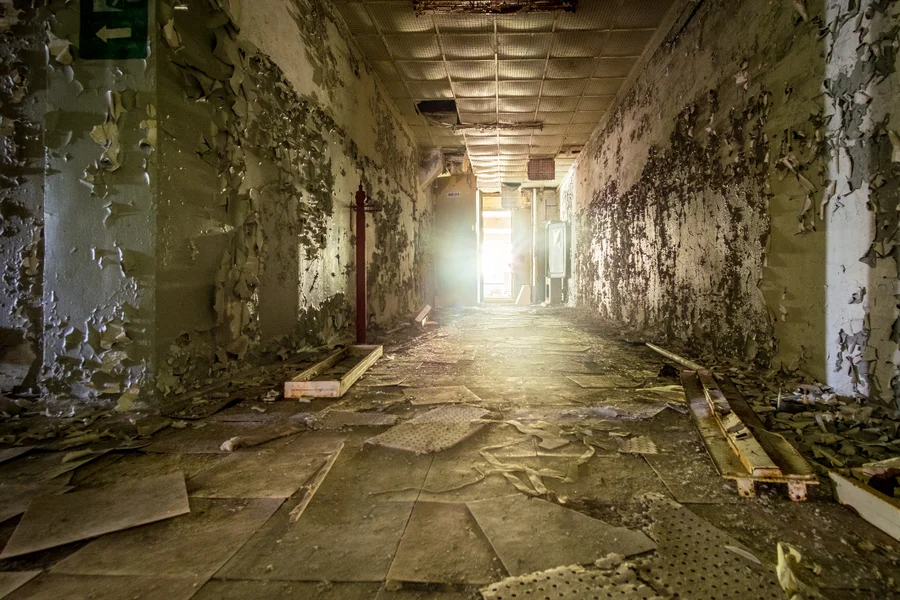
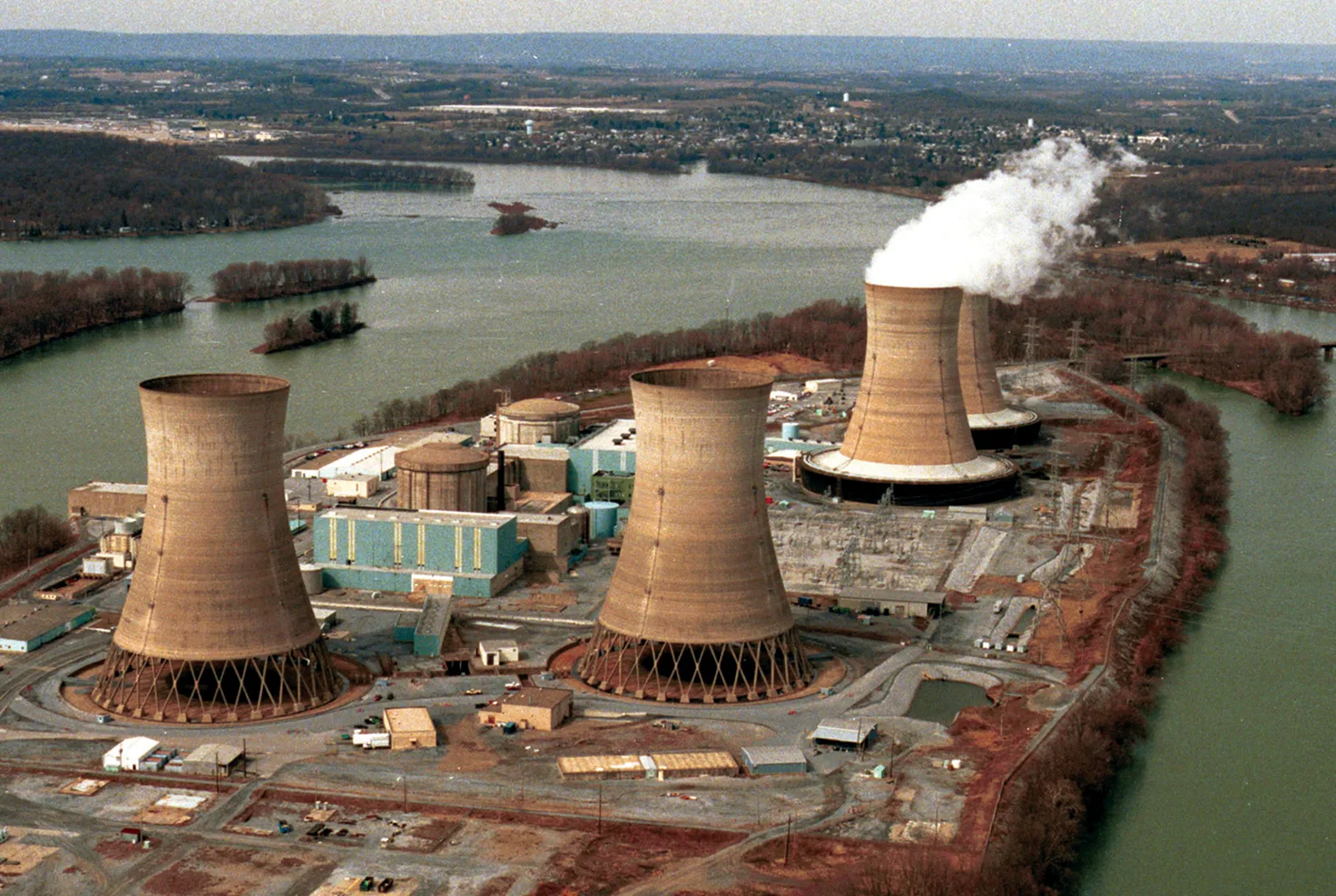
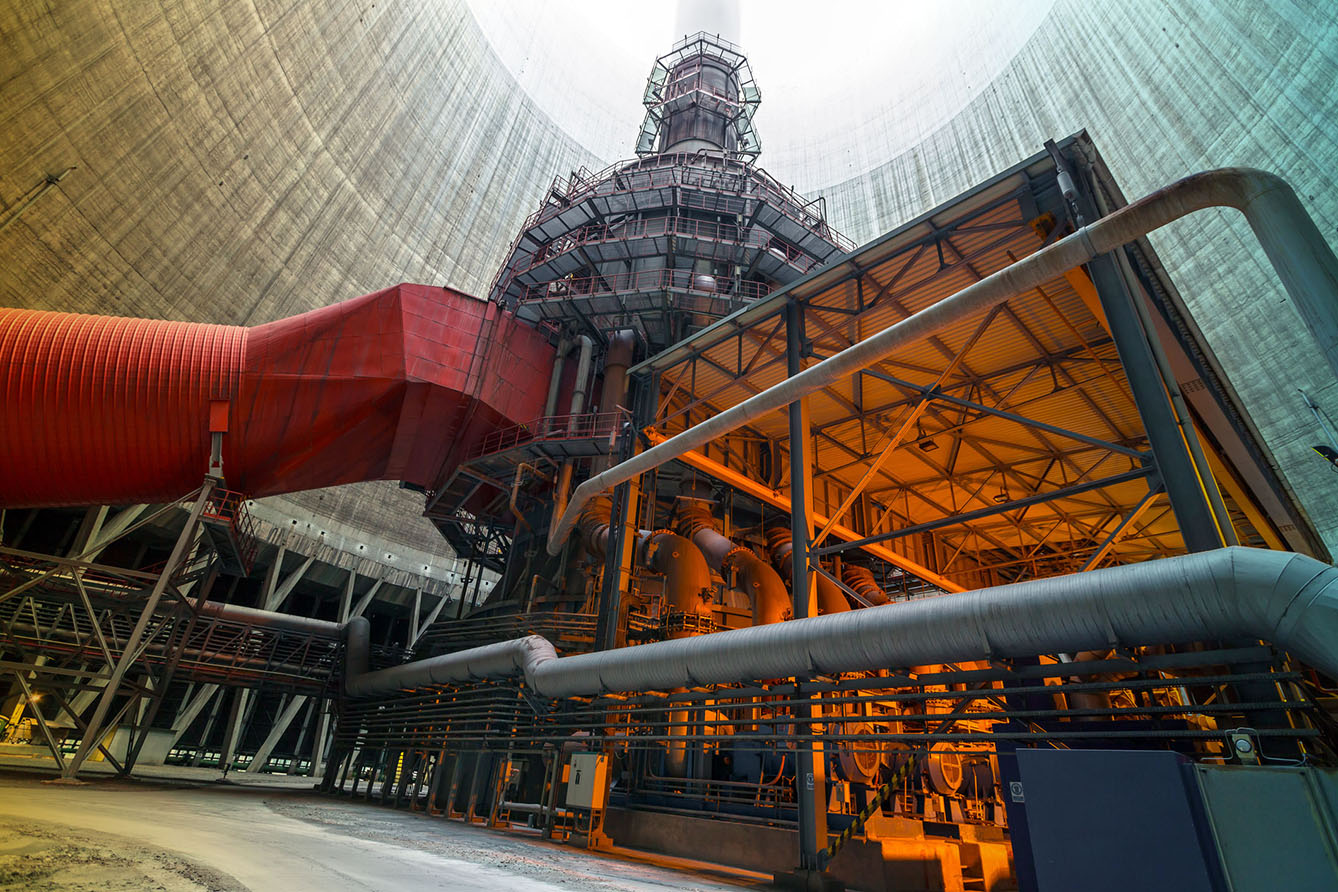
Yet the story of nuclear power doesn’t end with these tragedies—it evolves. While fears linger, nuclear energy remains a cornerstone in some countries. France, for example, generates 70 percent of its electricity from nuclear power, supplying energy to around 47 million people. This reliance demonstrates the potential of nuclear energy when supported by robust safety standards and technological innovation. Despite advancements and innovations in safety, the cloud of nuclear catastrophe continues to loom large in public consciousness.
Are these fears still justified, or are they holding us back from embracing a critical solution to the climate crisis? To find the answer, we must examine nuclear power through a clearer lens—placing its risks alongside those of other energy sources and weighing them against its immense potential.
On April 26, 1986, a routine test at the Chernobyl nuclear power plant in Ukraine triggered a catastrophic meltdown. The explosion destroyed the reactor and released a plume of radioactive material into the atmosphere, exposing millions to dangerous radiation levels. In the immediate aftermath, 350,000 people were evacuated within a 30-kilometer radius, and radioactive fallout was detected as far away as Sweden, over 1,000 kilometers from the site of the disaster.
After the initial explosion, one of the reactor cores continued melting down, inching toward the coolant water supply. If the molten radioactive material had reached the water, it would have triggered a second, catastrophic steam explosion with a blast force of 3 to 5 megatonnes. This would have launched considerably more radioactive debris into the atmosphere, exponentially worsening the disaster and rendering much of Europe uninhabitable for hundreds of thousands of years.
To prevent the second explosion, three men—later known as the legendary “Suicide Squad”—bravely volunteered to enter the irradiated water beneath the reactor and locate the valves to drain the coolant pool. Their mission was a miraculous success, averting a global catastrophe. Remarkably, two of the men, Alexei Ananenko and Valeri Bespalov, were still reportedly alive as of 2024. The third, Boris Baranov, passed away in 2005 from heart disease. Though relatively few deaths resulted directly from the event, Chernobyl remains a defining chapter in the history of nuclear energy.
For most people flying is scarier than driving a car, even if the latter has been shown to be more dangerous. There is a similar inconsistency with nuclear energy.
- Helmuth Boeck, Professor at the Vienna University of Technology’s Atomic Institute, GIS Reports
While Chernobyl and other high-profile nuclear accidents like Fukushima in 2011 have left a lasting impression on the public, they are the exception, not the rule. In fact, nuclear power is consistently ranked as one of the safest energy sources, comparable to wind and solar. Despite this, public fear persists, driven by haunting images of meltdowns and radioactive fallout.
Yet, these fears often overlook the relative risks of other energy sources. Coal, the world’s dirtiest and deadliest energy source, claims thousands of lives annually through air pollution and mining accidents. Even hydropower—touted as a clean and renewable energy source—has its dangers. The collapse of the Banqiao Dam in China, triggered by record rainfall in 1975, unleashed a six-meter-high wall of water, killing 85,000 people.
Although Chernobyl remains a cautionary tale in nuclear history, it is not representative of modern nuclear power’s safety record. Decades of advancements in reactor design and safety protocols have transformed the industry. Modern reactors incorporate state-of-the-art safety features and design improvements that render Chernobyl-style disasters virtually impossible.
Figure A - Death Rates by Energy Source:
| Energy Source | Death rate (deaths/terawatt-hour) |
|---|---|
| Coal | 24.6 |
| Oil | 18.4 |
| Biomass | 4.6 |
| Natural Gas | 2.8 |
| Hydropower | 1.3 |
| Wind | 0.04 |
| Nuclear | 0.03 |
| Solar | 0.02 |
* Information source: VisualCapitalist.com | Data Source: Our World In Data, 2020
Nuclear power stands out as a uniquely reliable and safe source of large-scale energy generation. Since the first commercial reactor began operating in 1951, there has been only one accident—Chernobyl—that directly claimed lives. In contrast, accidents in coal, oil, and natural gas industries have caused thousands of fatalities over the decades, while air pollution from fossil fuels kills millions annually. In fact, coal remains the deadliest and dirtiest form of energy, while even hydropower—the most widely used renewable source—is still 43 times deadlier than nuclear.
Despite its unmatched safety record, nuclear energy continues to be overshadowed by past disasters. However, these fears ignore decades of advancements in reactor design and safety protocols, making modern nuclear technology far more secure than the reactors of the past. As we seek solutions to the climate crisis, it’s time to reassess nuclear power—not through the lens of fear, but with a clear-eyed understanding of its potential.
The world needs more clean energy—fast. Wind and solar are part of the solution, but they aren’t enough. They need vast amounts of land, materials, and storage to compensate for their biggest limitation: intermittency.
Nuclear power, on the other hand, delivers round-the-clock, emissions-free energy with one of the smallest environmental footprints of any power source. And thanks to major technological advancements, nuclear’s best days may still be ahead.
Figure B - GHG Emissions by Energy Source:
| Energy Source | GHG Emissions (CO₂e/gigawatt-hour) |
|---|---|
| Coal | 820 tonnes |
| Oil | 720 tonnes |
| Natural Gas | 490 tonnes |
| Biomass | 78-230 tonnes |
| Hydropower | 34 tonnes |
| Solar | 5 tonnes |
| Wind | 4 tonnes |
| Nuclear | 3 tonnes |
* Information source: VisualCapitalist.com | Data Source: Our World In Data, 2020
So, what’s next for nuclear? Two groundbreaking technologies—Thorium Reactors and Small Modular Reactors (SMRs)—could redefine how we power the future.
Thorium, a naturally abundant metal named after the Norse god of thunder, has long been overlooked. Unlike uranium, thorium is not naturally fissile and can’t sustain a runaway reaction on its own, making meltdowns virtually impossible. It’s also three times more abundant than uranium, poses minimal environmental risk in its natural state, and there are large deposits on every continent except antarctica—meaning we could power the world for centuries without worrying about supply.
One of the most promising designs, the Liquid Fluoride Thorium Reactor (LFTR), eliminates many of nuclear energy’s biggest challenges. Instead of relying on solid fuel rods, it uses liquid thorium fuel that can drain into a passive cooling system in the event of an emergency—automatically shutting down the reaction. This design eliminates the risk of catastrophic meltdowns and LFTRs could even consume existing nuclear waste as fuel, addressing one of the most persistent challenges of nuclear power.
Thorium fuel cycles generate less waste, produce fewer long-lived radioactive byproducts, and offer greater fuel diversity while enhancing reactor safety.
No risk of meltdowns. Less waste. More safety. So why don’t we already use thorium reactors? Because history took a different path.
During the Cold War, governments prioritized uranium reactors—not because they were safer, but because they could also produce plutonium for nuclear weapons. Thorium, which doesn’t easily produce weapons-grade material, was left behind. Even after the arms race ended, investment never followed.
That’s beginning to change. China is leading the charge, developing an experimental thorium reactor with plans to have it operational by 2030. But as of 2022, no operational thorium reactors exist anywhere in the world. For now, thorium remains an untapped opportunity—one that could revolutionize clean energy if given the investment it deserves.
Every nuclear meltdown in history occurred in generation II uranium reactors—the first commercial reactors built after the generation I prototypes of the 1950s and 60s. Investment in nuclear power slowed significantly after the Chernobyl disaster, which is why most of the reactors running today are still generation II models. Their construction was phased out by 1990, with only a handful of generation III reactors built thereafter.
Now, with over fifty years of advancements in nuclear technology, the next leap forward is on the horizon—generation IV reactors, which include designs like Small Modular Reactors (SMRs). These modern reactors are far safer, cleaner, and more efficient, with features that drastically reduce the risk of accidents and generate less nuclear waste.
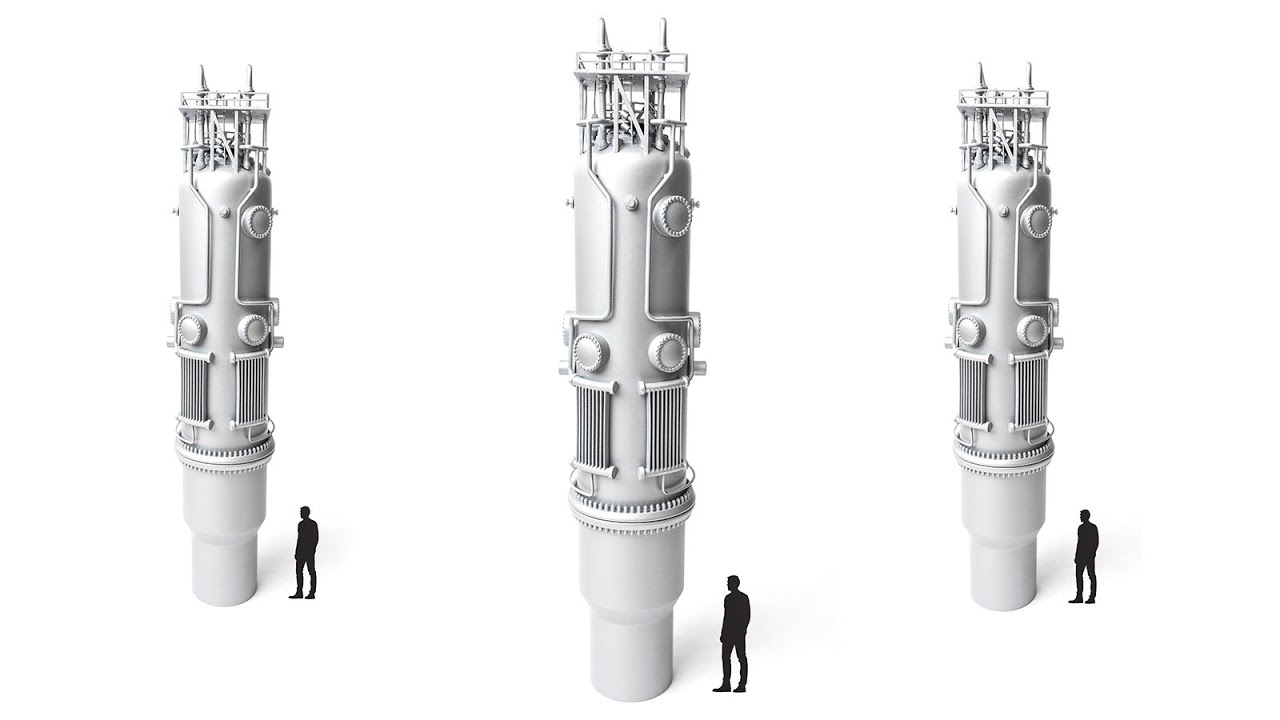
Small Modular Reactors can be built in a factory and transported wherever they are needed - CNET on YouTube
While thorium is still on the horizon, Small Modular Reactors (SMRs) are already here—and they could be the biggest shift in nuclear power in decades. Compact, scalable, and designed for enhanced safety, SMRs address many of the limitations of traditional nuclear plants.
Conventional nuclear power plants take years to build and cost billions. SMRs change that. They’re built in factories, transported like shipping containers, and deployed almost anywhere. Their modular design means plants can scale up gradually instead of committing to massive upfront investments.
They’re also smaller than ever, capable of generating anywhere from 2 to 300 megawatts of electricity. A single 50-megawatt SMR can power around 40,000 homes—without needing a massive grid connection. That makes them ideal for remote locations, off-grid communities, and energy-intensive industries like artificial intelligence and cloud computing.
Generation IV reactors, like SMRs, also make Chernobyl-style accidents physically impossible. Unlike older reactors, they incorporate passive safety systems that rely on natural physical processes and don’t require human intervention or mechanical devices. If an SMR overheats, it shuts itself down naturally—no operator needed.
SMRs are factory-built for quality and efficiency, with passive safety features that prevent catastrophic meltdowns. Their compact design allows deployment in locations unsuitable for traditional reactors.
- International Atomic Energy Agency (IAEA, 2023)
NuScale’s SMRs generate 77 megawatts each, and when combined in a 12-module plant, they can reliably produce nearly a gigawatt of power—on just 32 acres of land. In contrast, traditional nuclear plants require between 250 and 1,000 acres, while solar installations need 10,000 to 30,000 acres to generate the same energy, due to their lower energy density and dependence on sunlight.
Canada is already investing heavily in SMRs, exploring deployment for remote communities and industrial sites. The modular approach means smaller, flexible energy solutions instead of multi-billion-dollar megaprojects.
But challenges remain.
SMRs are still more expensive than renewables or fossil fuels, though costs are expected to drop as production scales up. They also still rely on uranium, meaning nuclear waste remains a factor—though a surprisingly small one.
The U.S. generates about 2,000 metric tons of spent nuclear fuel each year. This number may sound like a lot, but the amount is roughly equivalent to less than half the volume of an Olympic-sized swimming pool.
- Office of Nuclear Energy, U.S. Department of Energy
When nuclear fuel is recycled, gigawatt-sized reactors produce only about three cubic meters of vitrified high-level waste per year—tiny compared to fossil fuel waste. To put that into perspective, it would take 75 years of continuous operation to fill a single 1,000-square-foot apartment.
SMRs could redefine nuclear power’s role in the clean energy transition—if we’re willing to invest in them. But even with nuclear’s potential, it can’t solve the energy crisis alone. No single solution will get us to net zero. Solar, wind, and hydropower are all critical pieces of the puzzle—but they each come with their own challenges.
If renewables are the future, why do fossil fuels still dominate the grid? Why do countries continue building gas plants while shutting down nuclear reactors? And what hidden costs are lurking behind today’s “clean” energy sources?
To answer those questions, we need to take a hard look at the realities of solar, wind, and hydropower.
For years, the clean energy conversation has been dominated by one idea: replace fossil fuels with renewables. On paper, it seems like an obvious solution—build enough solar panels and wind turbines, and we can power the world without emissions.
But is it that simple?
Despite rapid growth, solar and wind still provide only a small fraction of Canada’s electricity—just 7 percent as of 2021. Hydropower, often hailed as the perfect renewable, is a major source of clean energy—but it comes with its own hidden costs. Meanwhile, fossil fuels remain deeply entrenched in the grid.
As of 2022, four Canadian provinces—Alberta, Saskatchewan, New Brunswick, and Nova Scotia—were still using coal to generate electricity. Although coal accounted for a mere 7 percent of Canada’s total electricity in 2019, it was responsible for nearly 60 percent of all greenhouse gas emissions from the power sector.
By switching to a cleaner, cheaper, and more abundant fossil fuel—natural gas—Alberta was able to end its dependence on coal in the summer of 2024. While cleaner than coal, natural gas still contributes over a third of the greenhouse gas emissions from Canada’s power sector, despite only generating 11 percent of the country’s electricity.
To understand why fossil fuel advocates push back on renewables—and why nuclear is so important—we need to take a hard look at the challenges of today’s clean energy transition.
Solar and wind energy are often framed as the future of electricity. But there’s a fundamental challenge: intermittency.
The sun doesn’t always shine. The wind doesn’t always blow. And when they don’t, the grid still needs power.
Canada has huge potential for solar and wind—particularly in Alberta and Saskatchewan. Despite the cold winters, the prairie provinces enjoy plenty of sunshine throughout the year. Calgary, the largest city in Alberta, can generate more solar energy per year than Rio de Janeiro.
The land required to replace fossil fuels with solar farms to generate electricity in Alberta would be 27.5 percent larger than the entire city of Calgary.
- Author’s Calculation (See Appendix 3A - Energy Calculations for Solar in Alberta)
But potential doesn’t always translate into practicality. Even in ideal conditions, wind and solar require enormous amounts of land and infrastructure to be viable replacements for fossil fuels.
Solar farms typically need two to four hectares (five to ten acres) to install one megawatt of capacity. Wind farms vary more widely, sometimes needing less space or significantly more, depending on factors like location and wind speed.
In 2020, Alberta's annual electricity demand reached nearly 80,000 gigawatt-hours (GWh), with around 67,000 GWh generated from fossil fuels. If we were to replace all fossil fuel-based electricity with solar power, it would require almost 38,000 megawatts of installed solar capacity—taking up about 114,000 hectares of land. That’s an area 27.5% larger than the entire city of Calgary, but still represents only about 0.2% of the province’s total land area.
For a detailed breakdown of Alberta’s electricity needs and solar land requirements, see Appendix: Figure A - Energy Calculations for Solar in Alberta.
That’s just one province. If Canada—or any country—were to scale this model nationwide, the sheer land footprint becomes staggering. And then there’s the issue of energy storage. Renewable energy sources like wind and solar come with a major challenge: they don’t produce power consistently. To maintain a stable power grid, large-scale storage solutions are essential.
Ensuring 24/7 electricity availability would require massive battery storage—enough to fill entire buildings. And because solar and wind don’t provide continuous power, the land required for energy generation can double or triple to produce and store enough energy in batteries to meet demand. The dominant storage solution today is lithium-ion batteries—but they degrade over time, are expensive, and come with their own environmental costs.
Lithium mining is one of the most resource-intensive extraction processes in the world, requiring vast amounts of water and producing toxic waste. The environmental impact of lithium extraction has led to pushback in places like South America, where mining operations have devastated local ecosystems.
Despite these limitations, renewables are growing. But even in the best-case scenario, they can’t do it alone.
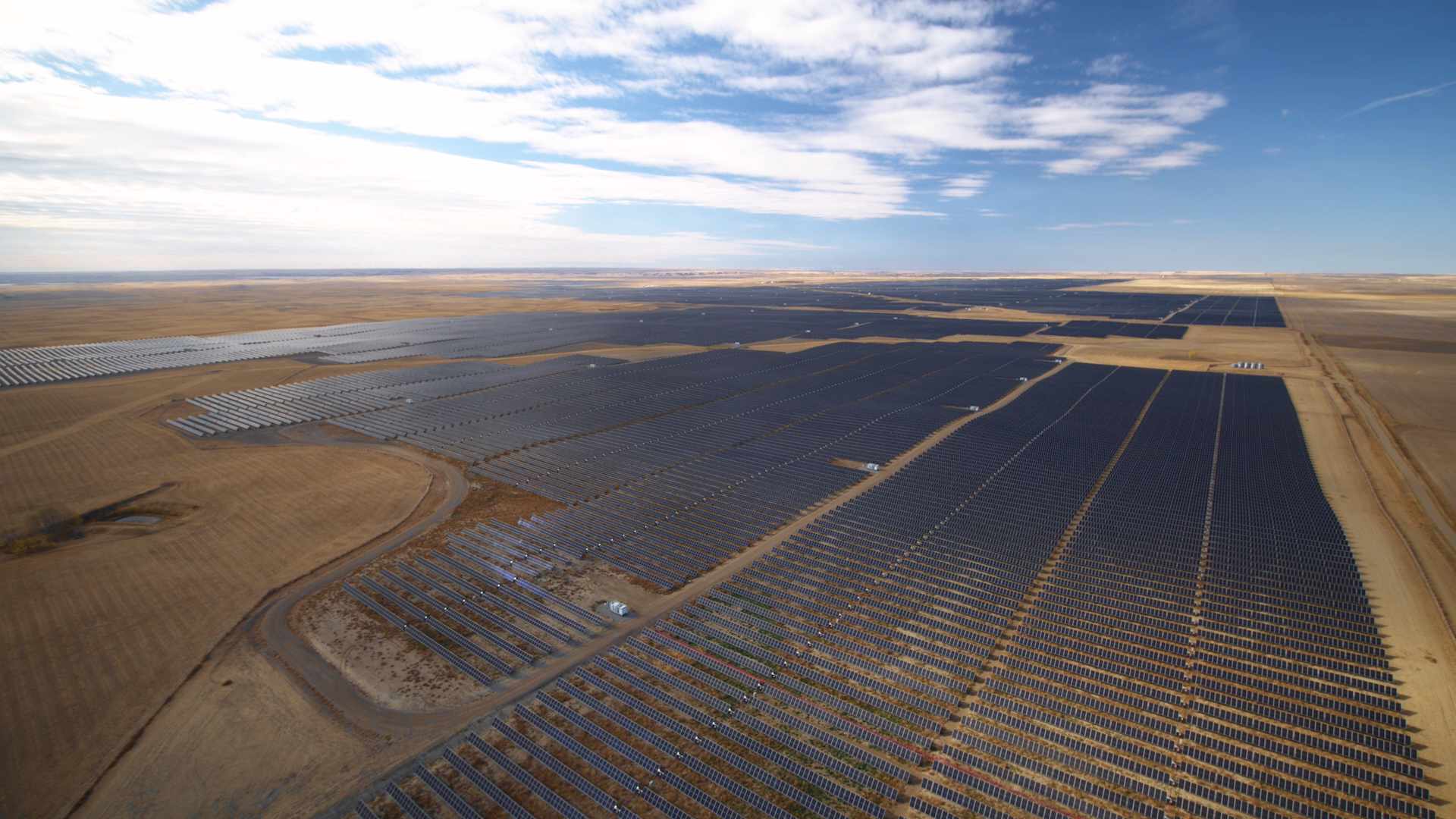
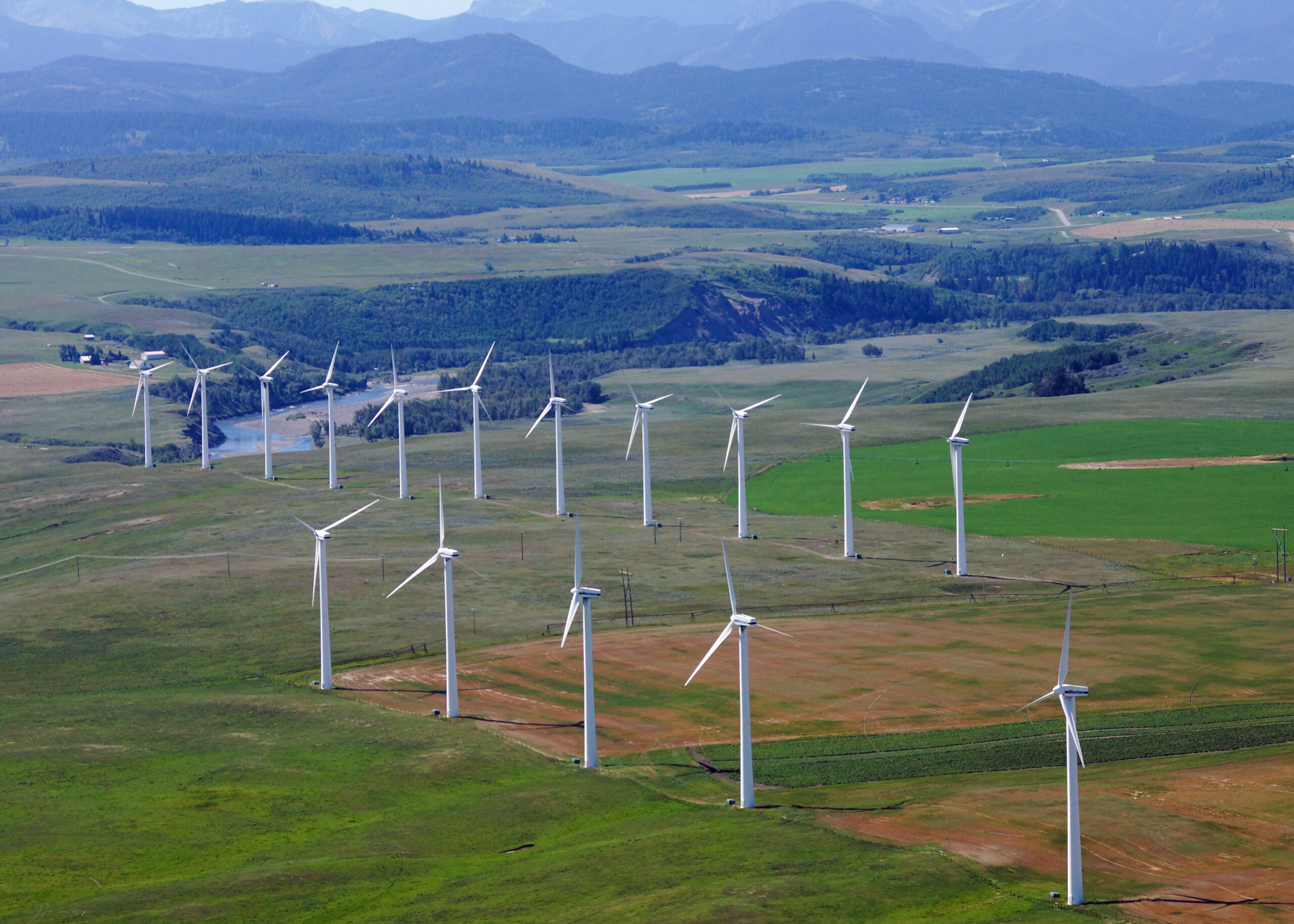

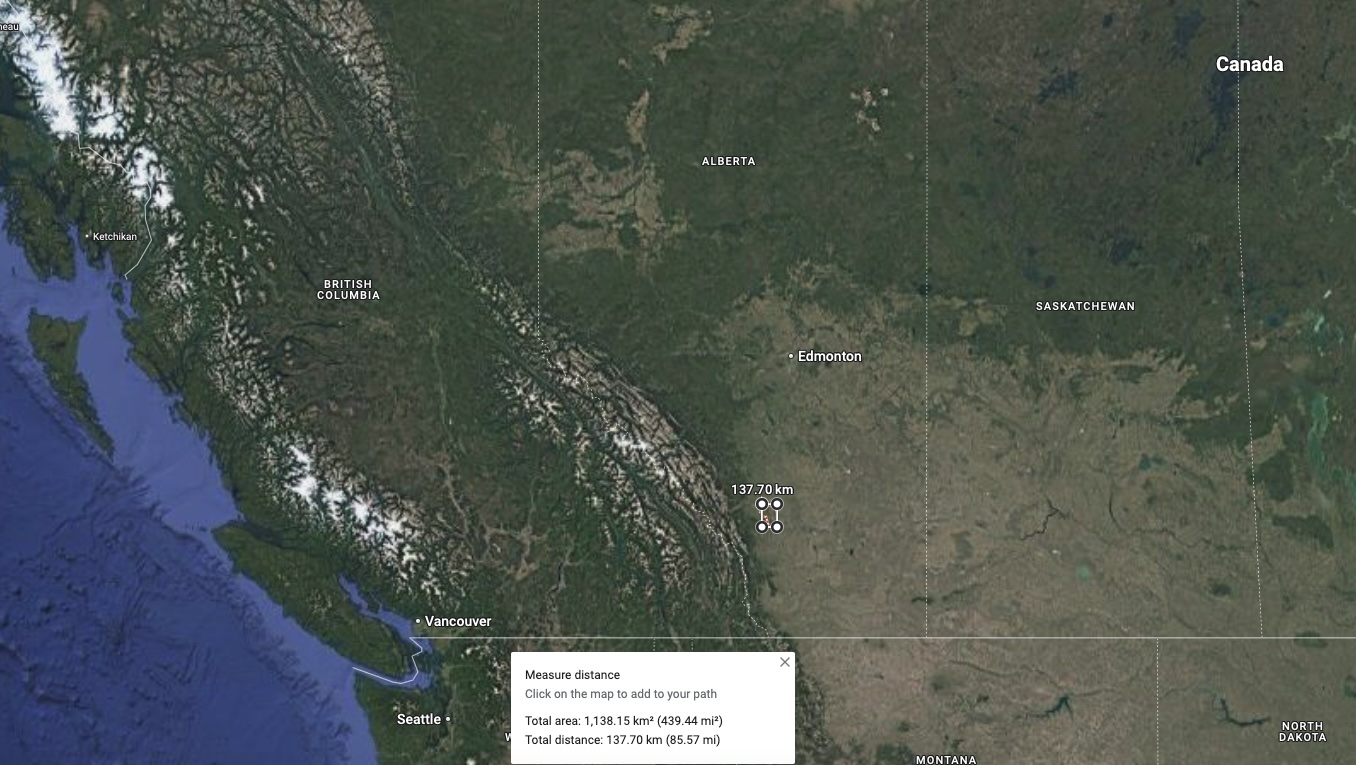
If solar and wind are intermittent, what about hydropower? In 2020, hydropower supplied 17 percent of the world’s electricity and its capacity grew by 70 percent since the turn of the century. It is the largest source of energy outside of coal and natural gas.
Canada is a hydropower giant—nearly 60 percent of the country’s electricity comes from dams thanks to an abundance of lakes and rivers. Unlike solar and wind, hydropower provides steady, reliable energy, making it the backbone of Canada’s electricity grid.
But hydropower has a dark side.
Hydropower reservoirs account for 1.3 percent of global human-caused greenhouse gas emissions, with methane making up 80 percent of their warming impact.
- Bridget Deemer, Washington State University (BioScience, 2016)
Hydropower has long been seen as an emissions-free energy source, but it comes with serious environmental trade-offs. Dams flood massive areas of land, destroying forests, wetlands, and entire ecosystems. They disrupt natural river flows, blocking fish migration and threatening biodiversity. And despite their reputation as clean energy sources, they release massive amounts of methane—one of the most potent greenhouse gases.
Globally, hydroelectric dams are responsible for emitting around a billion tonnes of greenhouse gases annually—more than the entire country of Canada.
This problem comes from how reservoirs are created. When land is flooded, plants and organic material trapped underwater begin to decay, releasing methane—a greenhouse gas that’s anywhere from 28 to over 80 times more potent than carbon dioxide. Unlike CO2, which lingers in the atmosphere for centuries, methane is a fast-acting climate accelerant—warming the planet much more rapidly in the short term.
On a 100-year timescale, methane has 28 times greater global warming potential than carbon dioxide and is 84 times more potent on a 20-year timescale.
At least 25 percent of today’s warming is driven by methane emissions from human activities. Studies show that 80 percent of the greenhouse gases released from reservoirs are methane, yet these emissions aren’t even counted in global climate targets.
This means that hydropower is not as “clean” as it appears. Despite these drawbacks, as of 2019, there were 3,700 medium and large hydropower projects planned or under construction globally—set to double the world’s installed capacity.
Hydropower is still far better than fossil fuels in terms of long-term emissions. But its land destruction, ecosystem damage, and methane release mean it’s not the flawless clean energy solution many assume it to be.
Given the challenges of wind, solar, and even hydropower, it’s no surprise that fossil fuel advocates point to these limitations as proof that the clean energy transition is unrealistic.
The challenges of renewables and hydropower help explain why fossil fuel proponents remain skeptical of the clean energy transition. If replacing fossil fuels with renewables was simple and straightforward, we would have done it already.
Fossil fuels still provide 18 percent of Canada’s electricity and over 60 percent of the United States’ power. Why? Because, despite their emissions, fossil fuels have one key advantage—reliability. They provide stable and readily available energy at all hours, without the need for massive battery storage or vast amounts of land.
This is why fossil fuel supporters push back against renewables-only policies. Their concerns aren’t entirely unfounded—the transition is harder than it looks. And as long as the gaps in solar, wind, and hydro remain, fossil fuels will continue to dominate.
Past nuclear plant shutdowns have led to increased fossil fuel consumption. The 1985 closure of reactors in the Tennessee Valley triggered a surge in coal use, while the 2012 shutdown of a California plant resulted in greater reliance on natural gas.
- Lyssa M. Freese & Noelle E. Selin et al., MIT Study (Nature Energy, 2023)
Clearly renewables alone won’t solve our energy problems, but we can’t keep using fossil fuels forever. That’s exactly why nuclear needs to be part of the conversation. Unlike solar and wind, nuclear provides continuous, reliable power. Unlike hydropower, it doesn’t require flooding land or releasing methane. And unlike fossil fuels, it produces no carbon emissions.
The challenge isn’t just replacing fossil fuels—it’s doing so without locking ourselves into another crisis. While renewables and hydro have real trade-offs, fossil fuels remain the biggest driver of climate change. If we’re serious about cutting emissions, we need solutions that are both reliable and truly clean—which is where nuclear comes in.
If we’re serious about cutting emissions while keeping the lights on, we can’t rely on just one solution.
The global retreat from nuclear energy, driven by fear and political inertia, has left many nations more dependent on fossil fuels and vulnerable to energy crises. As we face mounting climate challenges, it’s increasingly clear that phasing out nuclear power may have been a costly mistake.
Nuclear power remains one of the most powerful tools we have for replacing fossil fuels. It’s reliable, scalable, and emissions-free. But nuclear alone can’t meet every energy need. It’s expensive to build, takes years to deploy, and faces public resistance that slows progress. Small Modular Reactors could help mitigate some of these challenges, but the technology is still in its early days.
Even so, we cannot afford to sideline nuclear energy. No other clean energy source delivers this level of consistent, large-scale power with such a small environmental footprint. If we allow outdated fears to dictate policy, we risk repeating past mistakes—undercutting a proven solution while struggling to replace it with alternatives that simply can’t meet demand alone.
That’s why we need a balanced approach.
Solar and wind will continue to grow, but their real strength lies in reducing overall energy demand, rather than serving as reliable baseload power. Hydropower is a steady workhorse, but it has land and methane trade-offs. And even nuclear has limits.
Canada will need to build a projected 85 SMRs at a cost of $102 billion to $226 billion to reach our net-zero emissions target by 2050.
- Vivan Sorab, Senior Manager for Clean Technology, RBC Thought Leadership (2024)
But what if there were another always-on energy source—one that runs 24/7 like nuclear, produces zero emissions, and creates no long-lived waste that requires deep geological storage?
If we’re serious about moving beyond fossil fuels, we need every tool at our disposal—including one of the most overlooked and underutilized energy sources on Earth: Geothermal.
Like nuclear, geothermal energy is constant and reliable. But instead of splitting atoms, it taps into the Earth’s natural heat—a virtually limitless power source beneath our feet. We’ve barely begun to unlock its full potential.
Curious about why I wrote this book? Read my Author’s Note →
Want to dive deeper? A full list of sources and further reading for this chapter is available at: www.themundi.com/book/sources
Help shape the future! Sign up to receive behind-the-scenes updates, share your ideas, and influence the direction of my upcoming book on climate change.
